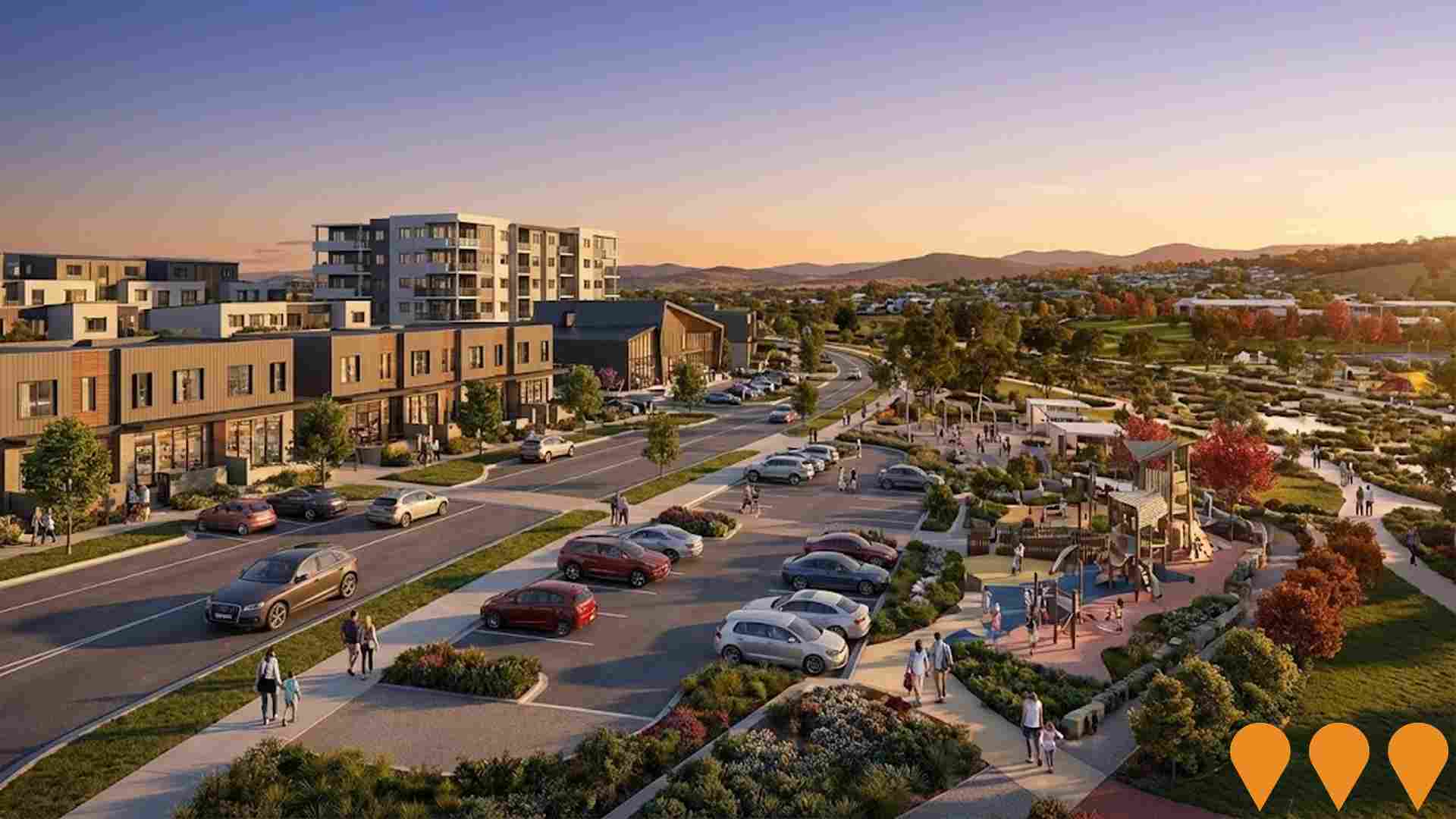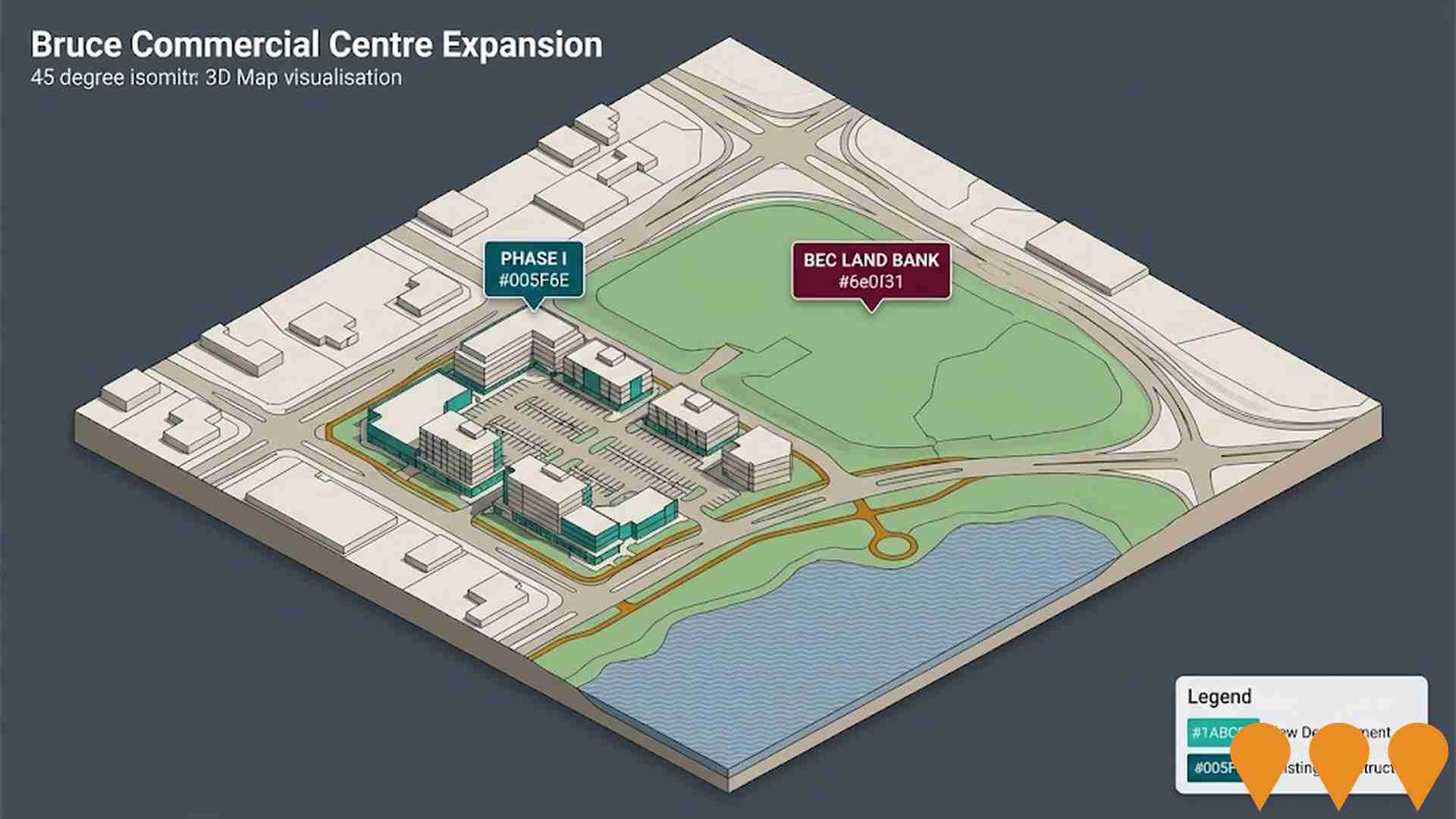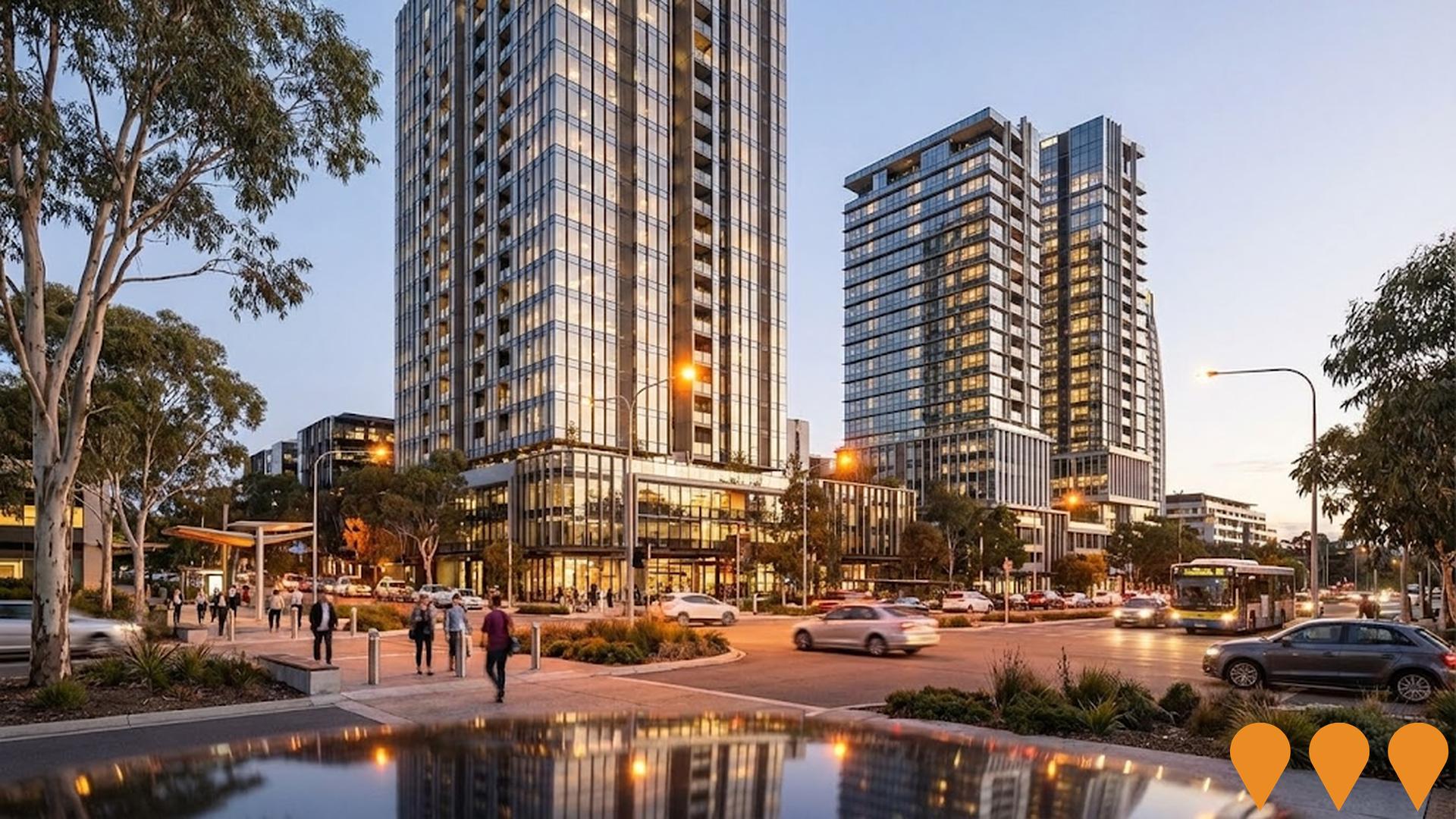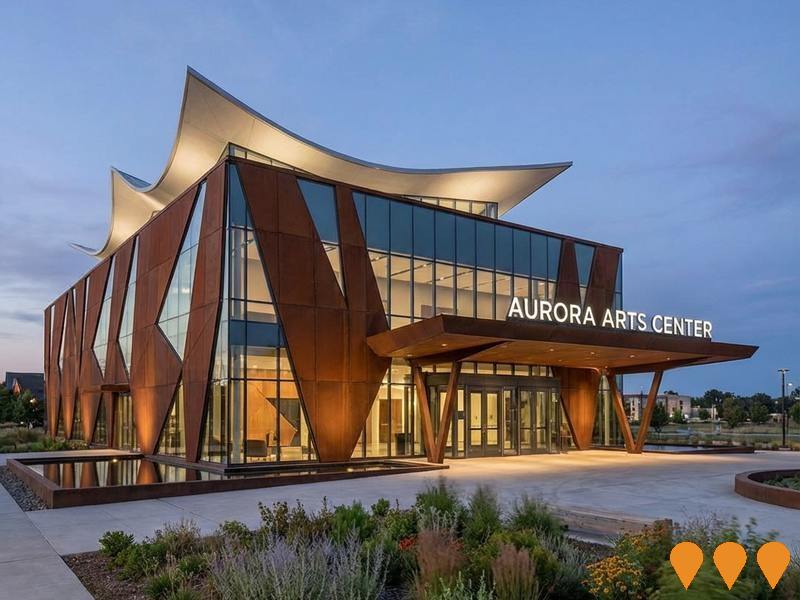Chart Color Schemes
est. as @ -- *
ABS ERP | -- people | --
2021 Census | -- people
Sales Activity
Curious about local property values? Filter the chart to assess the volume and appreciation (including resales) trends and regional comparisons, or scroll to the map below view this information at an individual property level.
Find a Recent Sale
Sales Detail
Population
An assessment of population growth drivers in Aranda reveals an overall ranking slightly below national averages considering recent, and medium term trends
Aranda's population is approximately 2,584 as of August 2025. This figure represents a decrease of 21 people from the 2021 Census total of 2,605. The change is inferred from an estimated resident population of 2,582 in June 2024 and the addition of 10 validated new addresses since the Census date. This population results in a density ratio of 1,656 persons per square kilometer, higher than the average across national locations assessed by AreaSearch. Overseas migration contributed approximately 77.9% of overall population gains during recent periods.
AreaSearch uses ABS/Geoscience Australia projections for each SA2 area, released in 2024 with a base year of 2022. For areas not covered and years post-2032, age group growth rates from the ACT Government's SA2 area projections are adopted, also based on 2022 data. Projections indicate an overall population decline by 319 persons in Aranda by 2041. However, specific age cohorts are expected to grow, notably the 45 to 54 age group, projected to increase by 4 people.
Frequently Asked Questions - Population
Development
Residential development activity is lower than average in Aranda according to AreaSearch's national comparison of local real estate markets
Aranda has received approximately 9 dwelling approvals per year. Over the past five financial years, from FY21 to FY25, 49 homes were approved, with an additional one approved so far in FY26. On average, 0.8 new residents have arrived annually for each new home over these five years.
This indicates that new construction is keeping pace with or exceeding demand, providing more options for buyers and potentially facilitating population growth beyond current projections. The average value of new homes being built is $399,000, slightly above the regional average. In FY26, $1.2 million in commercial development approvals have been recorded, reflecting Aranda's residential nature. Compared to the Australian Capital Territory, Aranda has about two-thirds the rate of new dwelling approvals per person and ranks among the 61st percentile of areas assessed nationally.
Regarding building activity, approximately 57% are standalone homes while around 43% are townhouses or apartments. This shift from the area's existing housing composition (currently 87% houses) suggests decreasing availability of developable sites and a response to changing lifestyles requiring more diverse and affordable housing options. Aranda has around 260 people per dwelling approval, indicating a low-density area. Given stable or declining population forecasts, Aranda may experience less housing pressure in the future, creating favourable conditions for buyers.
Frequently Asked Questions - Development
Infrastructure
Aranda has emerging levels of nearby infrastructure activity, ranking in the 25thth percentile nationally
No changes can significantly affect a region's performance like alterations to local infrastructure, major undertakings, and planning initiatives. AreaSearch has identified zero projects that are expected to impact this area. Notable projects include Bruce Precinct (Section 15), Bruce Residential Development Zone, Bruce Commercial Centre Expansion, and CIT Yurauna Building, with the following list providing details on those most likely to be relevant.
Professional plan users can use the search below to filter and access additional projects.
INFRASTRUCTURE SEARCH
 Denotes AI-based impression for illustrative purposes only, not to be taken as definitive under any circumstances. Please follow links and conduct other investigations from the project's source for actual imagery. Developers and project owners wishing us to use original imagery please Contact Us and we will do so.
Denotes AI-based impression for illustrative purposes only, not to be taken as definitive under any circumstances. Please follow links and conduct other investigations from the project's source for actual imagery. Developers and project owners wishing us to use original imagery please Contact Us and we will do so.
Frequently Asked Questions - Infrastructure
New Northside Hospital (North Canberra Hospital Redevelopment)
Development of a new major tertiary hospital on the existing North Canberra Hospital campus (formerly Calvary Public Hospital). The project involves an investment of over $1 billion to construct a new state-of-the-art clinical services building, expanded emergency department, and modern inpatient facilities to replace aging infrastructure.
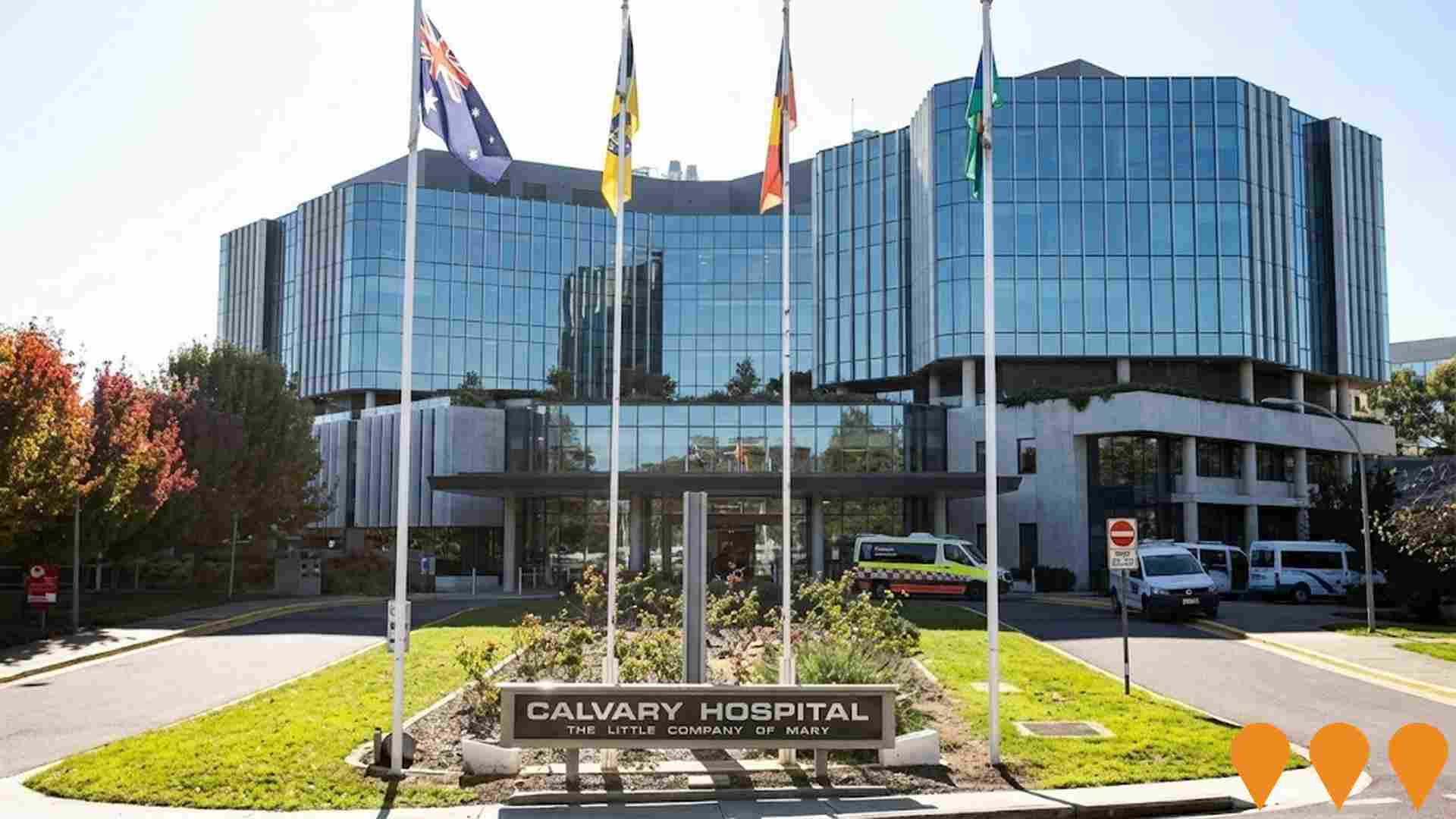
Canberra Light Rail Stage 3: Belconnen to City (Bruce Alignment)
Planning and feasibility analysis for the future Stage 3 of the Canberra Light Rail network, connecting Belconnen Town Centre to the City via Bruce. The proposed corridor serves major precincts including the University of Canberra, CIT Bruce, North Canberra Hospital, and GIO Stadium. The project follows the Belconnen Transitway alignment and aims to provide high-capacity public transport to the north-west.

Onderra
Onderra is a large-scale sustainable masterplanned community by Peet Limited on the University of Canberra campus in Bruce, ACT. The 15-hectare precinct will deliver approximately 1,600 high-quality terraces, townhouses and apartments with 7-8 star energy ratings, extensive tree retention, solar-passive design, rainwater harvesting, EV charging and direct access to Lake Ginninderra and 22 hectares of connected parks and open space.

Belconnen Lakeshore - Connected Waterfront Precinct
Belconnen Lakeshore is an ACT Government land release and urban renewal project on the Lake Ginninderra foreshore at Emu Inlet. Guided by the Belconnen Town Centre Place Design Brief, the project will transform four waterfront sites including the Circus Sites Precinct and the former Water Police site into a mixed use precinct with new public waterfront promenades, upgraded open space and taller mixed use buildings stepping up from the lake edge. The Suburban Land Agency has run a two stage tender process for the land release and evaluated tenders, but as at mid 2025 the lakeshore blocks have not yet been sold, with final sale and detailed development design still to be confirmed.

Bruce Precinct (Section 15)
A masterplanned mixed-use urban precinct and residential land release located centrally in Bruce, adjacent to the AIS and Bruce Ridge Nature Reserve. The project aligns with the Bruce Sports, Health and Education Precinct masterplan, delivering approximately 250-500 new dwellings, including affordable housing options, alongside commercial, hospitality, and retail opportunities.
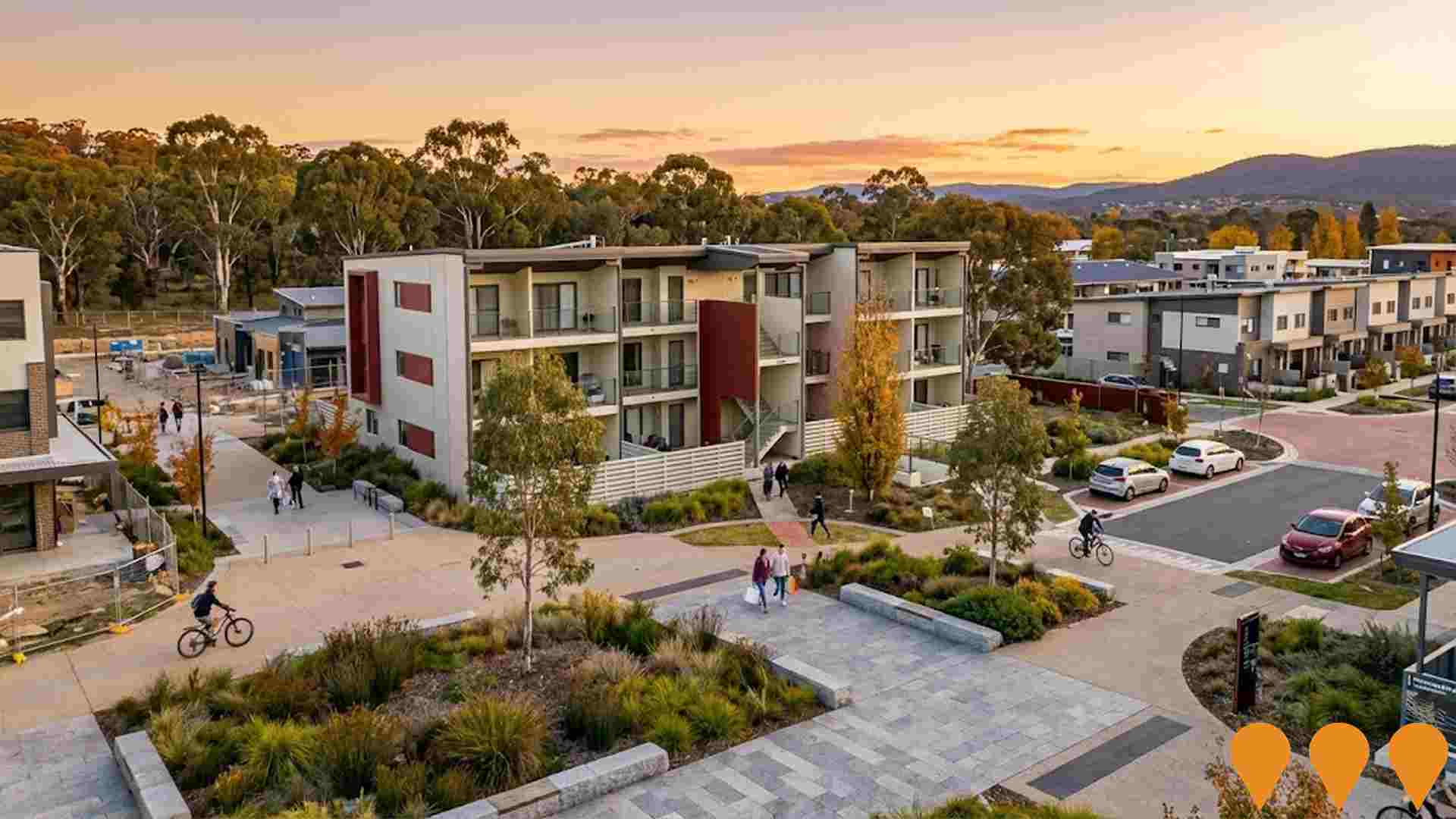
Belconnen Town Centre East Precinct (Republic Phase 2 & Future)
Major mixed-use redevelopment of the former Belconnen Bowling Club site and surrounding land in Belconnen Town Centre (approx. 5 km from Dunlop), delivering apartments, retail, and public spaces.
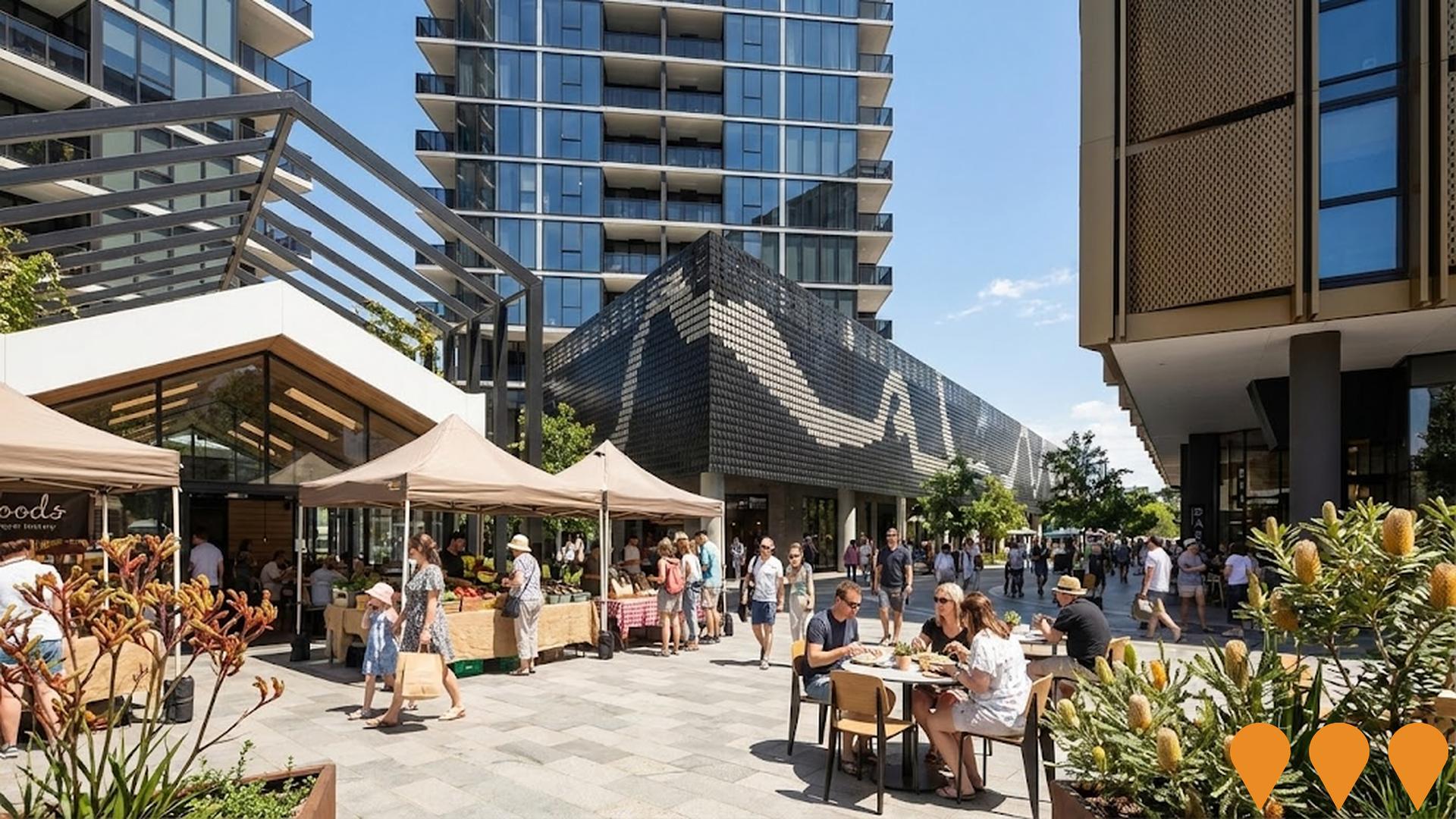
Bruce Residential Development Zone
New residential development zone in Bruce providing diverse housing options including apartments, townhouses, and detached homes. The development includes parks, playgrounds, and community facilities to support growing population.
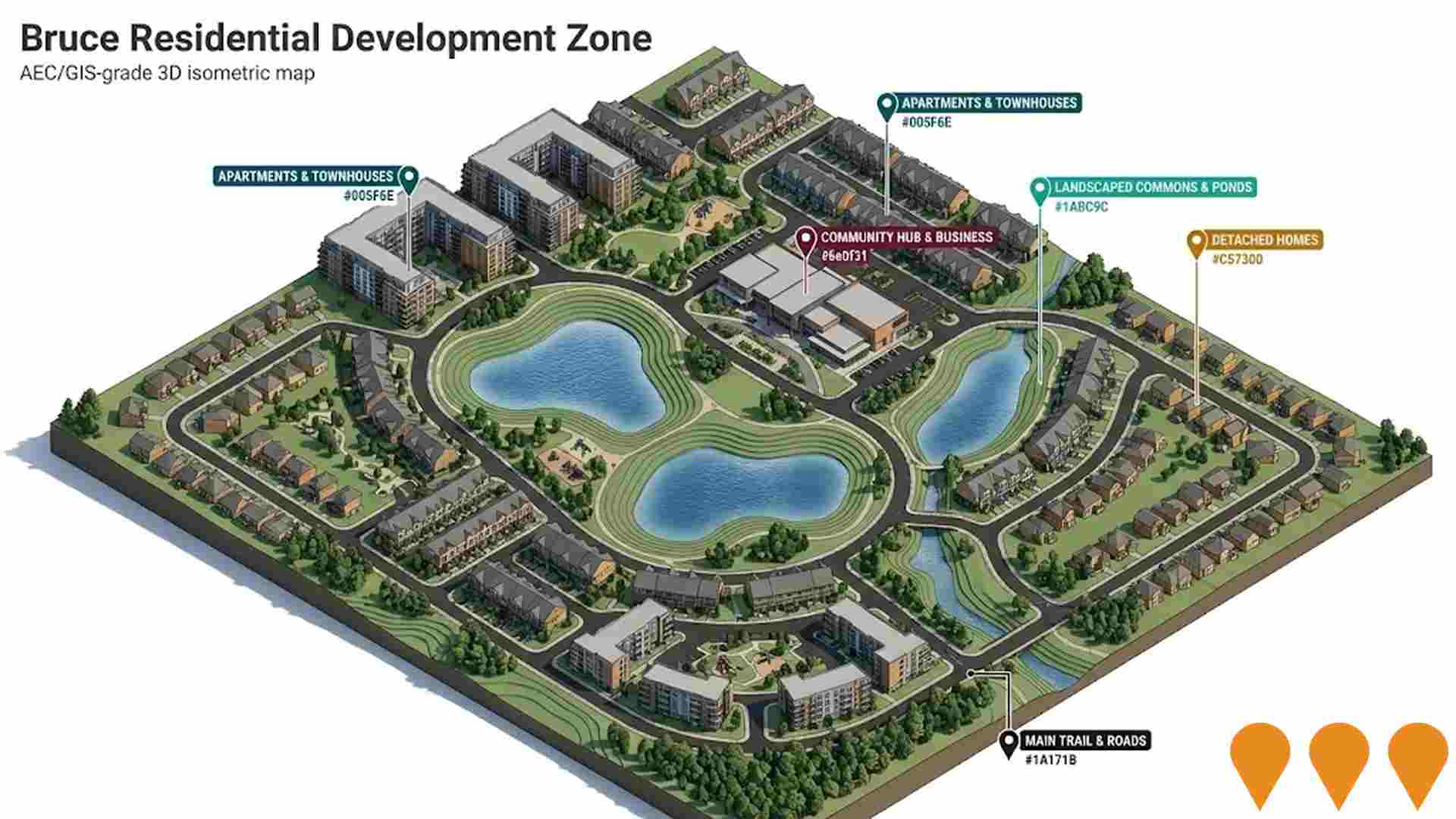
CIT Yurauna Building
New state-of-the-art educational facility for Canberra Institute of Technology at Bruce campus. The building will house modern teaching spaces, laboratories, workshops, and student facilities to support vocational education and training programs.

Employment
AreaSearch analysis indicates Aranda maintains employment conditions that align with national benchmarks
Aranda has an educated workforce with strong professional services representation. Its unemployment rate was 3.2% in the past year, with estimated employment growth of 2.6%.
As of June 2025, 1,361 residents were employed, with an unemployment rate of 3.2%, 0.2% below the Australian Capital Territory's (ACT) rate of 3.4%. Workforce participation in Aranda was 64.2%, compared to ACT's 69.6%. Leading employment industries among residents included public administration & safety, education & training, and professional & technical services. Education & training had an employment share of 1.6 times the regional level.
Health care & social assistance employed 9.5% of local workers, below ACT's 11.7%. Over the 12 months to June 2025, employment increased by 2.6%, while labour force grew by 1.6%, reducing the unemployment rate by 1.0 percentage points. In contrast, ACT saw employment rise by 1.9% and unemployment fall by 0.3 percentage points. Jobs and Skills Australia's national employment forecasts from May 2025 project national employment growth of 6.6% over five years and 13.7% over ten years. Applying these projections to Aranda's employment mix suggests local growth of approximately 6.6%% over five years and 13.4% over ten years, though this is a simple weighting extrapolation for illustrative purposes and does not account for localised population projections.
Frequently Asked Questions - Employment
Income
The economic profile demonstrates exceptional strength, placing the area among the top 10% nationally based on comprehensive AreaSearch income analysis
Aranda's income level is among the top percentile nationally according to latest ATO data aggregated by AreaSearch for financial year 2022. Aranda's median income among taxpayers is $76,660 and average income stands at $96,204. These figures compare to Australian Capital Territory's median of $68,678 and average of $83,634 respectively. Based on Wage Price Index growth of 13.6% since financial year 2022, current estimates would be approximately $87,086 (median) and $109,288 (average) as of September 2025. Census 2021 income data shows household, family and personal incomes all rank highly in Aranda, between the 96th and 98th percentiles nationally. Income analysis reveals the $4000+ bracket dominates with 37.1% of residents (958 people), contrasting with the surrounding region where the $1,500 - 2,999 bracket leads at 34.3%. Higher earners represent a substantial presence with 52.6% exceeding $3,000 weekly. After housing costs, residents retain 90.2% of income, reflecting strong purchasing power and the area's SEIFA income ranking places it in the 10th decile.
Frequently Asked Questions - Income
Housing
Aranda is characterized by a predominantly suburban housing profile, with above-average rates of outright home ownership
Aranda's dwelling structure, as per the latest Census, consisted of 87.3% houses and 12.7% other dwellings (semi-detached, apartments, 'other' dwellings), compared to Australian Capital Territory's 69.4% houses and 30.5% other dwellings. Home ownership in Aranda was at 44.7%, with mortgaged dwellings at 38.8% and rented ones at 16.4%. The median monthly mortgage repayment in the area was $2,500, higher than Australian Capital Territory's average of $2,000. Median weekly rent in Aranda was $530, compared to Australian Capital Territory's $430. Nationally, Aranda's mortgage repayments were significantly higher at $2,500 versus the Australian average of $1,863, and rents were substantially higher at $530 compared to the national figure of $375.
Frequently Asked Questions - Housing
Household Composition
Aranda features high concentrations of group households and family households, with a higher-than-average median household size
Family households constitute 78.7% of all households, including 39.6% couples with children, 30.2% couples without children, and 8.2% single parent families. Non-family households comprise the remaining 21.3%, with lone person households at 16.3% and group households making up 4.9%. The median household size is 2.8 people, larger than the Australian Capital Territory average of 2.5.
Frequently Asked Questions - Households
Local Schools & Education
Educational achievement in Aranda places it within the top 10% nationally, reflecting strong academic performance and high qualification levels across the community
Educational attainment in Aranda is notably high, with 62.5% of residents aged 15 and over holding university qualifications compared to the national average of 30.4% and the SA3 area average of 43.8%. Bachelor degrees are the most common at 30.7%, followed by postgraduate qualifications (24.5%) and graduate diplomas (7.3%). Vocational pathways account for 16.2% of qualifications, with advanced diplomas at 8.1% and certificates also at 8.1%. Educational participation is high, with 31.9% of residents currently enrolled in formal education.
This includes 10.3% in primary education, 9.0% in secondary education, and 7.8% pursuing tertiary education. Aranda Primary School and St Vincent's Primary School serve a total of 695 students and demonstrate significant socio-educational advantages with an ICSEA score of 1141. Both schools focus exclusively on primary education, with secondary options available in surrounding areas. The area functions as an education hub with 26.9 school places per 100 residents, significantly above the regional average of 15.1, attracting students from nearby communities.
Frequently Asked Questions - Education
Schools Detail
Nearby Services & Amenities
Transport
Transport servicing is low compared to other areas nationally based on assessment of service frequency, route connectivity and accessibility
Transport analysis shows 13 active stops operating in Aranda, offering a mix of bus services. These are served by 4 routes, providing a total of 211 weekly passenger trips. Transport accessibility is rated good, with residents typically located 228 meters from the nearest stop.
Service frequency averages 30 trips per day across all routes, equating to approximately 16 weekly trips per individual stop.
Frequently Asked Questions - Transport
Transport Stops Detail
Health
The level of general health in Aranda is notably higher than the national average with prevalence of common health conditions low among the general population though higher than the nation's average across older, at risk cohorts
Aranda demonstrates above-average health outcomes with a low prevalence of common health conditions among its general population, despite having a higher rate among older, at-risk cohorts compared to national averages. Approximately 69% of Aranda's total population (1790 people) has private health cover, which is higher than the Australian Capital Territory's 57.1% and the national average of 55.3%. The most common medical conditions in Aranda are arthritis and mental health issues, affecting 8.7% and 7.9% of residents respectively.
However, 70.1% of residents declare themselves completely clear of medical ailments compared to 68.1% across the Australian Capital Territory. Aranda has a higher proportion of residents aged 65 and over at 19.6% (505 people), compared to the Australian Capital Territory's 15.3%.
Frequently Asked Questions - Health
Cultural Diversity
Aranda was found to be more culturally diverse than the vast majority of local markets in Australia, upon assessment of a range of language and cultural background related metrics
Aranda's population was found to be more culturally diverse than most local markets, with 15.8% speaking a language other than English at home and 26.5% born overseas. Christianity was the predominant religion in Aranda, comprising 31.0% of its population. However, Judaism had an overrepresentation in Aranda, making up 0.4% compared to the Australian Capital Territory's 0.1%.
The top three ancestral groups were English at 26.3%, Australian at 25.0%, and Irish at 10.0%. Notably, Polish (1.1% vs 0.8%), Welsh (0.8% vs 0.6%), and Hungarian (0.4% vs 0.3%) were overrepresented compared to regional figures.
Frequently Asked Questions - Diversity
Age
Aranda hosts an older demographic, ranking in the top quartile nationwide
Aranda's median age is 42, which is considerably higher than the Australian Capital Territory figure of 35, and also significantly higher than Australia's median age of 38 years. Compared to the Australian Capital Territory average, the 5-14 cohort is notably over-represented in Aranda at 15.1%, while the 25-34 year-olds are under-represented at 10.0%. From 2021 to present, the 15 to 24 age group has grown from 11.7% to 12.9% of Aranda's population, and the 45 to 54 cohort increased from 13.0% to 14.1%. Conversely, the 55 to 64 cohort has declined from 13.0% to 10.9%. Demographic modeling suggests that Aranda's age profile will evolve significantly by 2041. The 45 to 54 age cohort is projected to expand notably, increasing by 5 people (2%) from 363 to 369. Conversely, both the 85+ and 65 to 74 age groups are projected to see reduced numbers.
